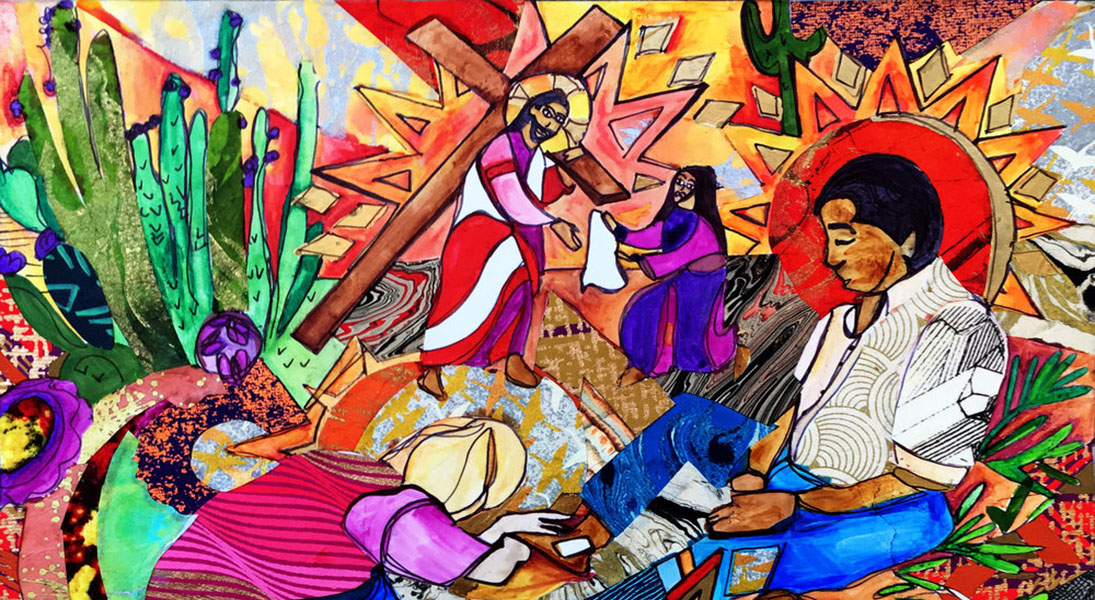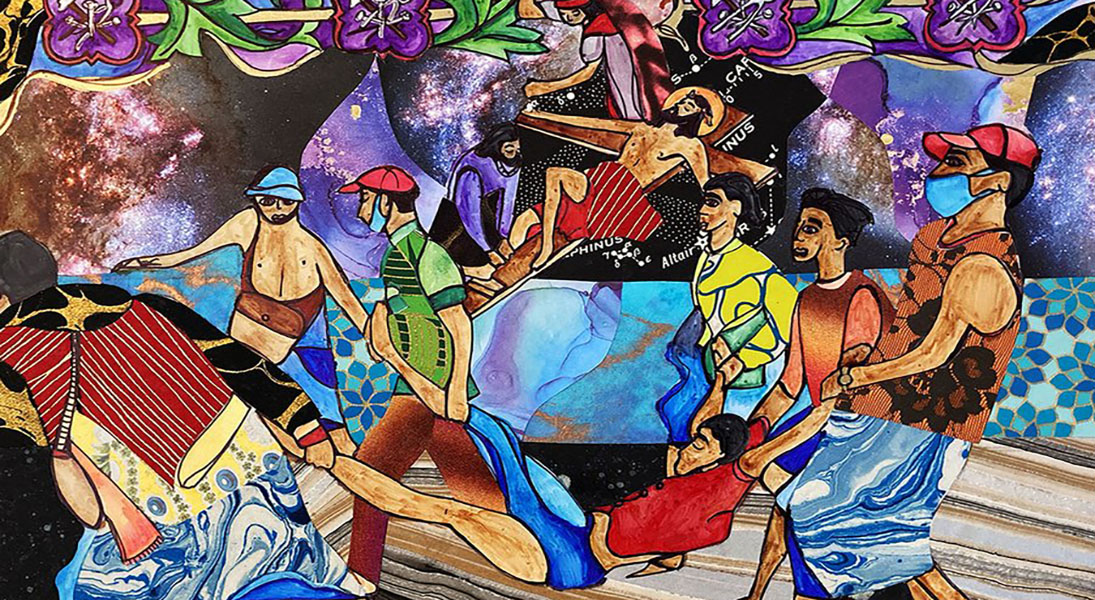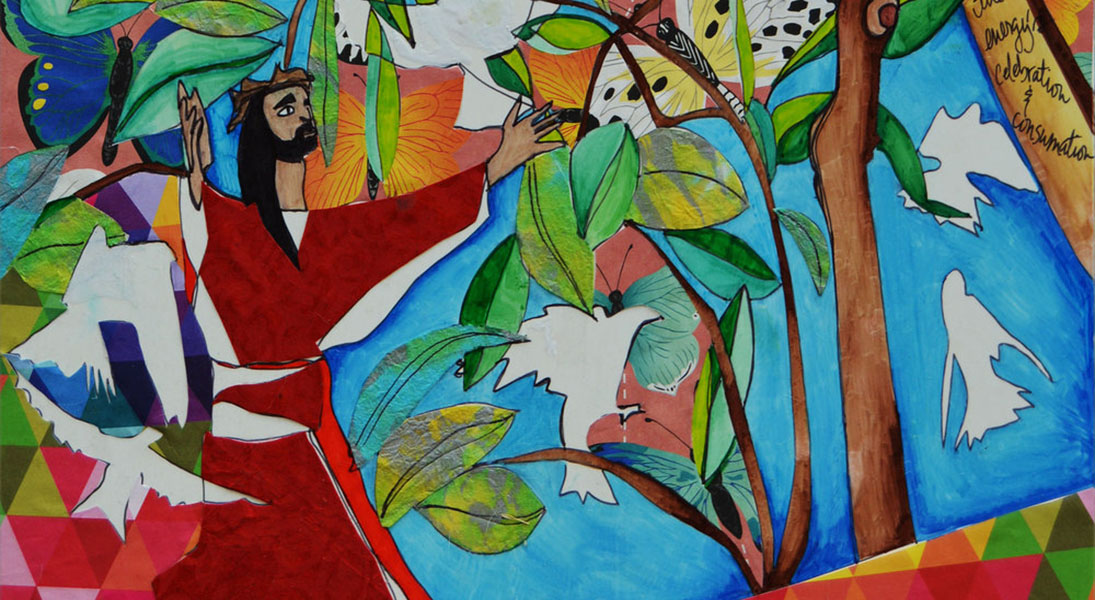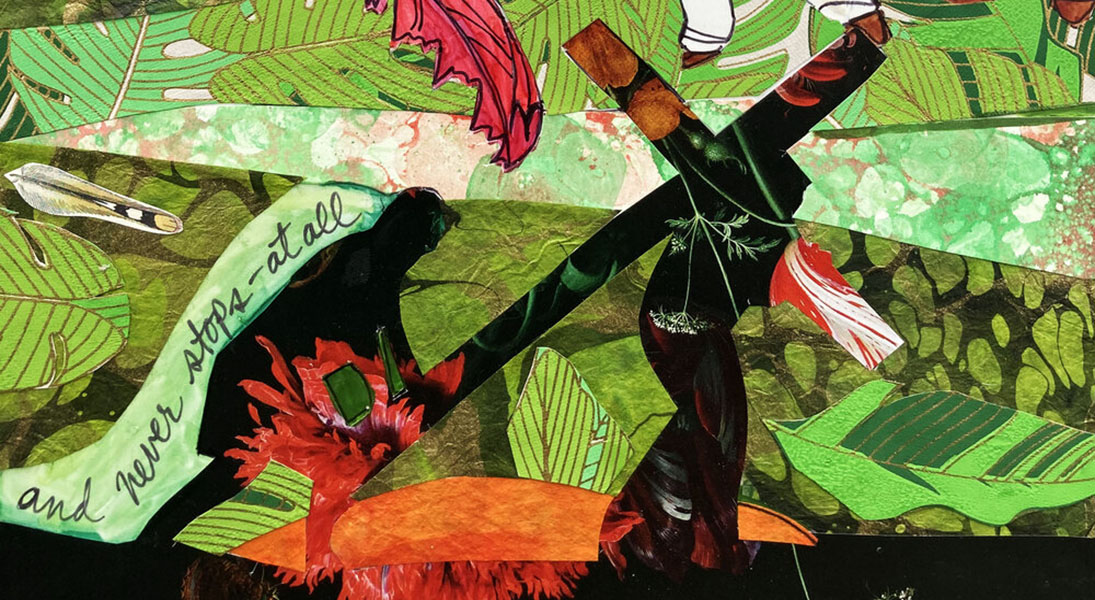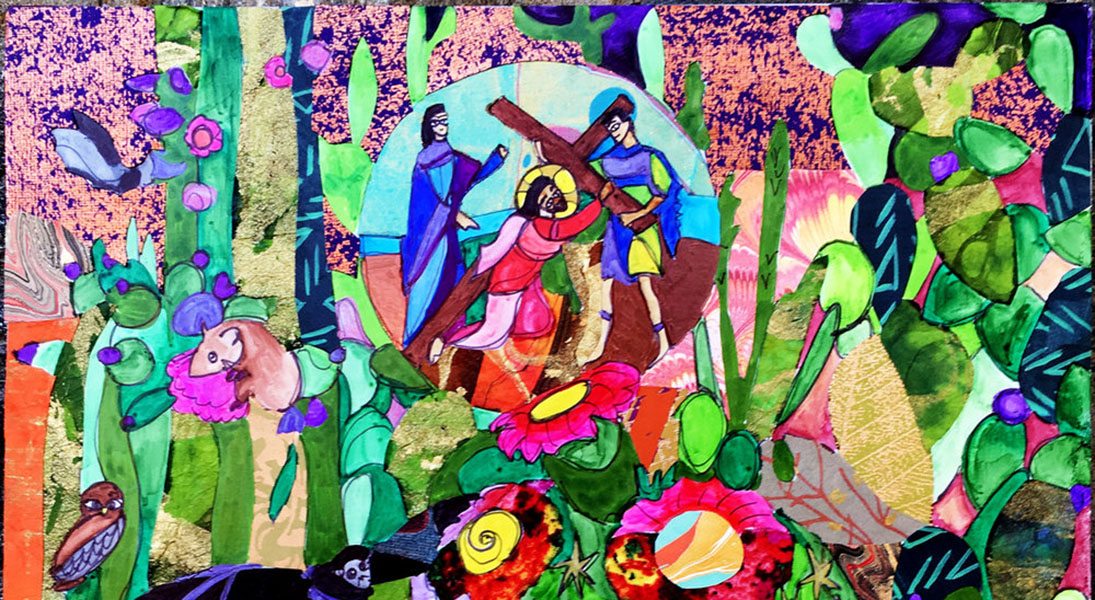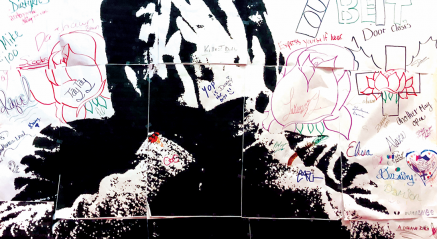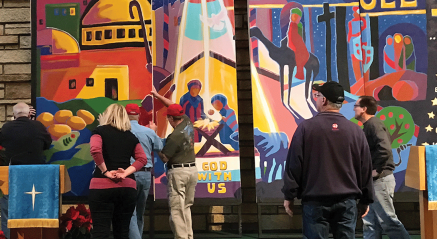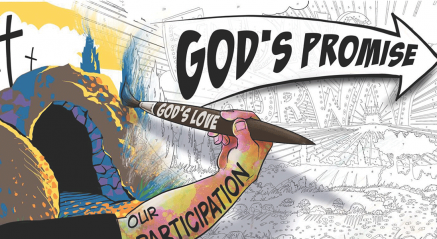Mary Button serves a three-point call as pastor of Lutheran Witness Along the Delaware, a shared ministry between the congregations of St. Peter Lutheran in Port Jervis, N.Y.; St. Luke Lutheran in Greeley, Pa.; and Koinonia Family Camp in Highland Lake, N.Y. She’s also a freelance artist who has spent much of her career in ministry incorporating art into worship.
“It has been a gift to have spent as much time as I have making art with folks in church settings,” Button said. “I think that it can bring joy and spontaneity in all sorts of exciting ways.”
Nearly every Lenten season, for more than a decade Button has created pieces for her ongoing Stations of the Cross series—colorful, mostly collage-based works that depict the Passion story alongside current events. She began the series while pursuing her Master of Theological Studies degree at Candler School of Theology at Emory University, Atlanta, when she became fascinated with narrative ethics and its visual possibilities in Christian devotional works.
Previous entries in the series have spotlighted the Syrian uprising, LGBTQIA+ equality, mass incarceration, mental illness, climate change, the humanitarian crisis at the U.S.-Mexico border, migration and refugee journeys and, most recently, COVID-19. “I hope that, even in approaching hard topics in my art, the colors are vivid and compelling,” she said.
This year she is releasing a 40-day blog, posting reflections each day of Lent on artworks from past series alongside the work itself, at marybutton.com/blog. Digital downloads of the artworks are available for purchase as postcards, prayer cards, print sets and posters.
Living Lutheran spoke with Button about her Lenten series and how art informs her approach to ministry.
Living Lutheran: How do you intend for people to engage with your Stations of the Cross series?
Button: I hope that the stations help people to see the Passion story in a new way. I also hope that it helps folks to deepen their prayer practice. For me, having an image to focus on, and words to pray, helps. Like all artists, I’m making what I need.
Artists are storytellers, and pastors have to be storytellers too.
Why did the idea of narrative ethics resonate with you, and how did you approach the series with that framework in mind?
I believe that all people—not just Christians and other religious folks, but all people—make sense of their lives through stories. The stories that our grandparents and parents tell us about our families and where we came from. The stories that we’re taught in school about the country where we live. The stories that we tell about ourselves and who we want to be in the world. Narrative ethics examines how stories inform our moral values.
My concentrations were in American religious history and ethics. So I was spending a lot of time in ethics seminars at the same time that I was becoming more and more interested in creating devotional art in my studio practice.
How do your work and mindset as an artist intersect with your pastoral ministry?
I think that I approach most things as an artist. Artists are storytellers, and pastors have to be storytellers too—not just in telling [Christ’s] story through preaching but in helping people see their own lives as part of the story of God’s redeeming work in the world. More than that, I think having an artist’s outlook means being flexible, playful and good-humored—all very helpful in ministry!
Your 2022 Stations of the Cross and Resurrection entry pairs moments in the Passion story with Jesus’ post-resurrection ministry. You’ve said the Stations of the Cross artworks in it depict moments of chaos and crisis during the pandemic, while the Stations of the Resurrection depict moments of community and catharsis. How did you decide on this approach?
Well, initially, I planned for the 2022 stations to just be a Stations of the Resurrection, and I wanted it to be about the end of the COVID pandemic. But, obviously, there was no neat and tidy “end” to the pandemic. So I thought that I could still do both—that for each Station of the Cross, I’d also create a Station of the Resurrection. Ideally, people use them for their prayer practice and pray the stations—Cross/Resurrection—side by side.
When you began in ministry, you served as minister of visual art at First Congregational Church [United Church of Christ] in Memphis, Tenn., holding weekly gatherings for members to create art for rotating liturgical art installations. How did that experience impact you?
It helped me think in very concrete ways about how to make the liturgical year come alive for folks. It also taught me a lot about how to teach to multigenerational groups. These installation projects always require breaking big projects down into smaller parts, so there’s a lot of figuring out which steps are kid-friendly or can be done by folks with fading vision, etc.
What do you believe art ministry brings to worshiping communities?
Engaging with art expands our imaginations and is a new way to invite the folks in the pews into the story. Our worship services in the Lutheran tradition tend to favor auditory learners, with our emphasis on preaching and music. Integrating visual art and art-making into worship is one more way to reach people with a wide variety of learning styles.



